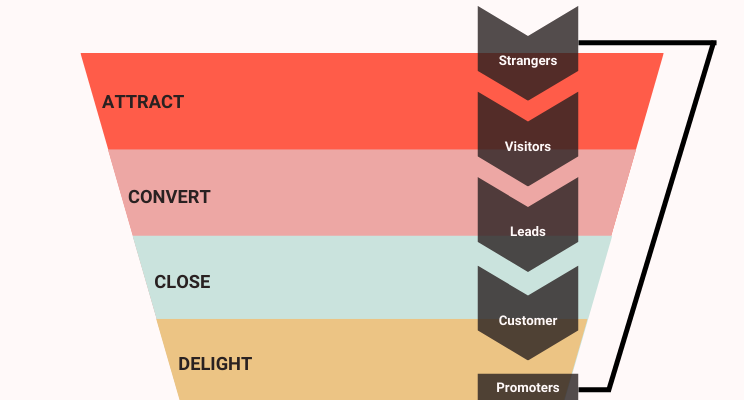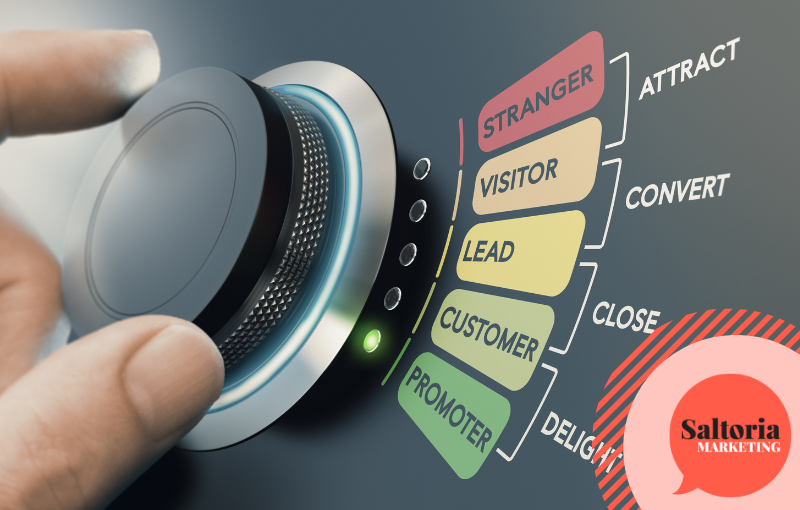What is inbound marketing? If you run a search on Google, you’ll find dozens of definitions. However, this statement from TechTarget seems to be the most comprehensive to us.
Inbound marketing is a strategy that focuses on attracting customers, or leads, via company-created online content, thereby having potential customers come to the company rather than marketers vying for their attention. This type of marketing tries to make it easier for customers, who are already actively looking for goods or services via the Internet, to find what a company offers..
TechTarget
Inbound marketing is simply a strategy to earn the attention of your potential buyers at any stage of their journey with you. Whether it’s the awareness, consideration, or conversion phase that your existing and potential customers are navigating through, your content should help them achieve their goals. And, therefore, organically drive them to your website.
4 inbound marketing approaches to consider
Have you heard about the marketing funnel before? If you haven’t, no worries. Press pause on this blog post for a second, grab yourself a cup of coffee or tea and get all the info you need from this article we wrote.
The Inbound Methodology offers 4 approaches to consider: attract, convert, close and delight.

1. Attract
How do you successfully drive potential customers to your website? You do this by addressing their needs, problems and desires through high-quality and inspirational, educational or entertaining content. We recommend optimising your content for SEO and organic traffic (visitors that land on your website from unpaid sources i.e. free traffic) to have more chances of being visible to your target audience.
Top tip: Your tools for attracting new people to your website include: your blog, SEO, Social Media and your overall website. Plus, we recommend you optimise your website (and all content) for mobile.
2. Convert
How do you turn your website visitors into leads? Make sure that your landing pages, your forms and your calls-to-actions are all in perfect shape (and in the perfect place!). Create content that addresses your customer directly and their challenges and your solution to overcome them.
- Landing pages: Is your layout inviting and clear? Is the content informative and persuasive? Is your offer good enough to convince someone to sign up in exchange for their contact details?
- Forms: Are you including all the essential information required? Is the content simple and concise? Have you included the relevant consent requirements (e.g. marketing opt-in and your privacy policy link + tick box)?
- Calls-to-actions: What action would you like the visitor to take after browsing your landing page? Is it clear? Keep things simple for the customer (and yourself); stick to 1 or 2 CTAs maximum across the same landing page.
3. Close
Now that you have the visitor’s attention, it’s time to guide them towards the buying decision. Your website is a great place to nurture the relationship with your leads. A good CRM software and email marketing tool will do the rest.
Top tip: Your tools for turning leads into customers: your website, personalised and optimised emails, a good CRM system and (of course!) great customer service.
4. Delight
Once the sale is made, it’s important to keep your business top of your customer’s minds. You should carry on engaging and delighting your customers through excellent content that they’d be also happy to share with their network.
Inbound marketing vs. outbound marketing
So, what’s the difference between inbound and outbound marketing?
Outbound marketing is the most traditional way of marketing a business. From telemarketing to billboards and display ads; the aim is to push out a message as far as you can, hoping that it resonates with someone within the audience you’re reaching.
Inbound marketing works exactly the other way around and it’s based on the creation and dissemination of insightful and inspiring content. People that are interested in your content, may head to your website for more information and potentially become your customers.
Outbound marketing is widely used; however, it’s becoming less and less effective. People are bombarded with cold calls and ads and are figuring out more and more ways of blocking or avoiding them. Advertising costs also make this type of activity tricky for many businesses.
So, whilst inbound marketing requires time and effort to gain momentum, it certainly is a more efficient way of generating new leads for your business.
Benefits of Inbound Marketing
The main benefit of inbound marketing is that it doesn’t feel super salesy or pushy. In fact, rather than reaching out to the masses (who are trying to block you out), you’re here to help (through content) people that are already interested in what you do. You’re not ‘pushing’; you’re ‘attracting’ people who’ll engage with your content only if they want.
For this reason, inbound marketing can return better results than traditional marketing. In fact:
- When consumers find your company this way, they are more inclined to be impressed by your business and be more receptive.
- Inbound marketing generates entirely organic leads, so it relies on brains rather than budget.
Building a content marketing strategy
So, how do you develop and execute a content marketing strategy that will help you grow your business and attract new potential customers without wasting money?
Here are 5 steps to get you started:
Step 1: Define your business goals and buyer personas.
If you want to write content that truly resonates with your potential buyers, you need to know your audience inside and out. You can find more tips on how to create marketing personas for your business in this video.
Step 2: Provide content at every stage.
What questions are your customers likely to ask? Have a think about the answers you can provide and how you make these unique and compelling. Preemptively answer the questions your customers are likely to ask at each stage of their buying journey.
Step 3: Have a content distribution plan.
The more valuable the content you create for your audience, the more likely your leads will turn into customers. Determine the best way to reach them, whether it’s through LinkedIn, Pinterest, Facebook, your blog, or elsewhere.
Step 4: Create and execute your content calendar.
Keep a constant stream of content that addresses your customers’ questions, issues and pain points.
Step 5: Analyse results and optimise your inbound marketing strategy.
Take a look at your SEO rankings, monitor your inbound links and the engagement derived from the articles you’ve published. This data will give you the insights you need to understand how your content marketing campaign is performing. If you’re not sure where to start with this – then get in touch, we can help you!
We hope you found this blog useful. If you have any questions or need help in developing your content marketing strategy and inbound plan, then get in touch! You can easily book a 20-minute slot directly on our calendar – it’s free.





0 Comments